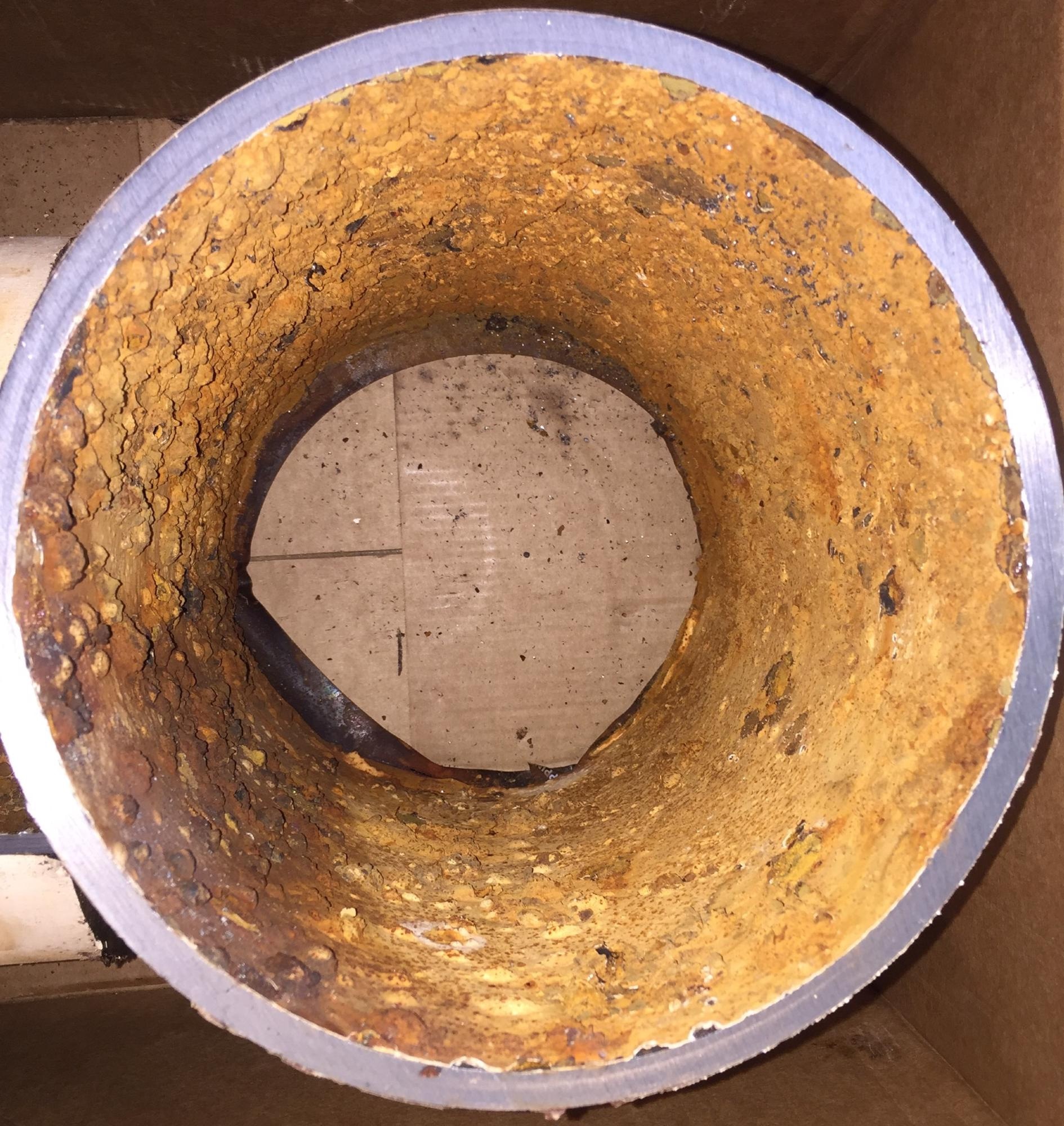Dec 4 2020
A new study performed by engineers from the University of California Riverside (UC Riverside) reports that rusted iron pipes could react with residual disinfectants present in drinking water distribution systems and generate carcinogenic hexavalent chromium in drinking water.
 The rusted interior of this water pipe contains chromium that reacts with residual water disinfectants to form carcinogenic hexavalent chromium. Image Credit: Water Chemistry and Technology Lab/UCR.
The rusted interior of this water pipe contains chromium that reacts with residual water disinfectants to form carcinogenic hexavalent chromium. Image Credit: Water Chemistry and Technology Lab/UCR.
Chromium is a metal naturally found in the groundwater and soil. Minuscule amounts of trivalent chromium ultimately appear in the drinking water and food supply and are believed to have neutral impacts on health. In general, chromium is added to iron to increase its corrosion resistance.
Chromium atoms can change into a hexavalent form, which makes cancer-causing genetic mutations in cells, during some chemical reactions. This carcinogenic form of chromium formed the core of a lawsuit filed in California’s Central Valley by Erin Brockovich, which became the subject of an Oscar-winning movie.
Haizhou Liu, a professor of chemical and environmental engineering at the Marlan and Rosemary Bourns College of Engineering who deals with water treatment chemistry, was of the notion that the source of a portion of the chromium present in drinking water might be chemical reactions that take place between water disinfectants and the chromium in cast iron corrosion scales.
Liu collaborated with doctoral student Cheng Tan and postdoctoral scholar Sumant Avasarala to obtain segments of two pipes in service for around 5 and 70 years, respectively, and induced corrosion on some sections of the pipes.
The researchers scraped off rust, ground it to a powder, and quantified the amount and types of chromium present. They then put the samples in hypochlorous acid, the form of chlorine often utilized in drinking water distribution systems and municipal drinking water treatment plants.
Although earlier experiments had demonstrated that water disinfectants could change trivalent chromium into toxic hexavalent chromium, the researchers were amazed when zerovalent chromium detected in the rusted iron pipes changed more rapidly to the toxic form.
Then, they performed modeling experiments that indicated a variety of possibilities for how much hexavalent chromium could exit the tap under real-world conditions. The worst-case scenario was found in drinking water with high bromide levels.
These new findings change our traditional wisdom on hexavalent chromium control in drinking water and shine light on the importance of managing the drinking water distribution infrastructure to control toxic substances in tap water.
Haizhou Liu, Professor, Chemical and Environmental Engineering, Marlan and Rosemary Bourns College of Engineering, University of California Riverside
The study warns that as the water crisis intensifies across the globe, desalinated and recycled water—both of which tend to include higher bromide levels—will turn out to be more significant, emphasizing the need to comprehend and avoid chromium contamination.
The study also suggests decreased use of pipes with high levels of chromium alloy and use of a disinfectant that does not react much with chromium, like monochloramine.
The study was financially supported by a National Science Foundation CAREER Program grant.
Journal Reference:
Tan, C., et al. (2020) Hexavalent Chromium Release in Drinking Water Distribution Systems: New Insights into Zerovalent Chromium in Iron Corrosion Scales. Environmental Science and Technology. doi.org/10.1021/acs.est.0c03922.